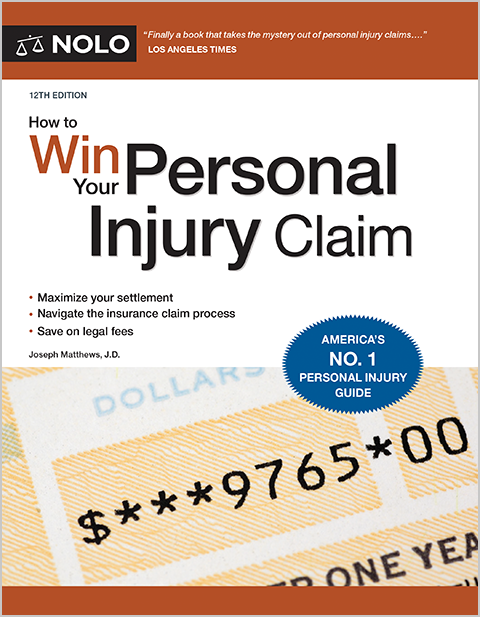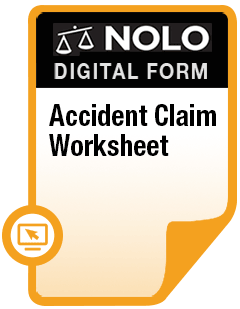A look at wrongful death claims in Maryland, including who can file the lawsuit, types of available damages, and more.
When a person dies as a result of another party's accidental or intentional action, the deceased person's family could be eligible to file a wrongful death lawsuit. Maryland, like every other state, has a set of laws that apply to wrongful death claims. We'll look at several key parts of these laws, including who can file a wrongful death claim in Maryland, what types of damages might be available, and the time limit on filing this type of lawsuit in the state's civil courts.
What Is "Wrongful Death" in Maryland?
Under Maryland law, a "wrongful death" is a death that is caused by "an act, neglect, or default including a felonious act which would have entitled the party injured to maintain an action and recover damages if death had not ensued." (Md. Code, Cts. & Jud. Proc. § 3-901 (2021).) In other words, a wrongful death claim can be thought of as a personal injury claim in which the injured person is no longer capable of bringing his or her own claim to court. Instead, the family members of the deceased person must file a wrongful death claim in order to hold the defendant accountable and get compensation for their losses.
As with a personal injury claim, many types of events can be the basis of a wrongful death lawsuit, including:
- a negligence-based incident (such as a car accident)
- medical malpractice, or
- an intentional act (including a crime).
Also as in other types of personal injury lawsuits, the defendant's liability in a successful wrongful death case is expressed solely in terms of financial compensation ("damages") that the court orders the defendant to pay to the deceased person's survivors or estate. This is one major difference between a wrongful death lawsuit and a criminal homicide case, where a conviction can result in jail or prison time, fines paid to the state, probation, and other penalties.
There are other differences between a criminal prosecution for homicide and a wrongful death civil lawsuit. For instance, in a criminal case, the accused's guilt must be established "beyond a reasonable doubt," which is a very high bar for the prosecution to clear. In a civil lawsuit, the defendant's liability must be shown only "by a preponderance of the evidence," meaning it's more likely than not that the defendant is responsible for the death. It is possible, though, for a single act to result in criminal charges and a wrongful death claim: A defendant can be sued for wrongful death in civil court while facing criminal charges related to the same death.
Learn more about proving liability in a wrongful death case.
Who Can File a Maryland Wrongful Death Lawsuit?
In Maryland, the deceased person's spouse, parents, and/or children are permitted to file a wrongful death lawsuit. If no one in any of those groups survives the decedent, any person related to the deceased by blood or marriage and who was substantially dependent on the deceased may file the wrongful death claim.
Read more about who has the legal right to file a wrongful death lawsuit.
What Types of Damages Are Possible in a Maryland Wrongful Death Case?
In a successful wrongful death case, "damages"—or the plaintiff's claimed losses—are awarded to the deceased person's survivors to compensate them for injuries suffered in connection with the death. In Maryland, damages in a wrongful death case can include compensation for the following categories of losses:
- financial contributions the deceased would have made to survivors
- mental anguish, emotional pain and suffering,
- loss of society, companionship, comfort, and protection
- loss of marital care, parental care, or filial care, and
- loss of attention, advice, counsel, training, guidance, or education.
The court may award damages to beneficiaries in proportion to the loss each person suffered as a result of the death. (Learn more about damages that might be available in a wrongful death case.)
Some states, including Maryland, have limited (or "capped") noneconomic damages in wrongful death lawsuits. Noneconomic damages are those that cannot be measured in terms of bills or receipts, such as damages for mental anguish and loss of companionship. In 2021, Maryland's cap on noneconomic damages in a wrongful death case with a single beneficiary (such as a surviving spouse or single child) is $845,000. That amount is increased by $15,000 every year on October 1. In wrongful death cases with multiple beneficiaries, the cap is 150% of the cap for single beneficiaries. (Md. Code Ann., Cts. & Jud. Proc. § 11-108 (2021).)
Note that different caps apply if the death was a result of medical malpractice.
How Long Do I Have to File a Wrongful Death Claim in Maryland?
Like other types of lawsuits, wrongful death claims must be filed within a certain period of time, set by a law called a "statute of limitations." In Maryland, the statute of limitations for most wrongful death lawsuits is three years from the date of the person's death.
There is an exception to that rule if the person died from an "occupational disease," which is defined as a "disease caused by exposure to any toxic substance in the person's workplace and contracted by a person in the course of the person's employment." In that case, the lawsuit must be filed within:
- ten years of the date of the death, or
- three years of the date that occupational disease was identified as the cause of the person's death, whichever is sooner.
(Md. Code, Cts. & Jud. Proc. § 3-904 (2021).)
Wrongful death cases can be complicated—and the law can change at any time. If you're thinking of filing a wrongful death lawsuit in Maryland, consider consulting a personal injury attorney. An experienced lawyer can explain how the law might apply to your specific situation.


